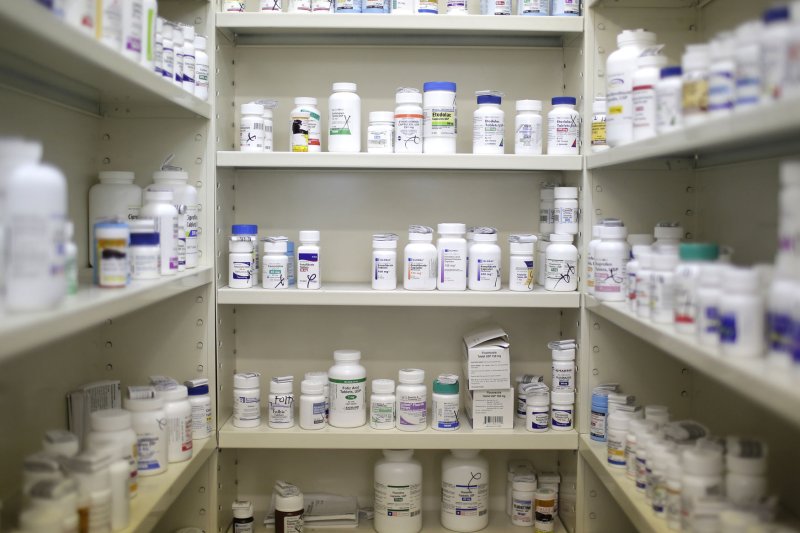Rising costs for prescription drugs paid by insurance and consumers may be in part due to more expensive formulations being ordered, according to a new study. File photo by John Angelillo/UPI |
License Photo
Feb. 4 (UPI) -- People in the United States can save up to 40% on prescription drug costs by switching to different formulations of the same medication, when available, a study published Friday by JAMA Health Forum found.
In the analysis of costs for 28 medications available as a tablet or capsule, 33% of prescription orders were placed for the high-priced formulation, the data showed.
Similarly, for 21 drugs dispensed as a cream or ointment, 47% of orders involved the more costly formulation, the researchers said.
If the lower-cost formulation had been ordered, spending for the analyzed drugs -- both in terms of out-of-pocket expenses and those covered by health insurance -- would have been reduced by 42%, according to the researchers.
"Our findings illuminate the stark and often unexplained variation in prices that can exist between similar medication treatments," study co-author Sunita Desai told UPI in an email.
"They also highlight the need for more transparency of prices to allow patients and providers to balance both clinical and cost considerations when making treatment decisions," said Desai, an assistant professor of population health NYU School of Medicine in New York City.
Out-of-pocket costs, or expenses above and beyond what is covered by insurance, have increased in recent years in the United States, fueled at least in part by rising prices for brand-name drugs and reduced availability of generic alternatives, research suggests.
Studies have found that up to 18 million people nationally cannot afford their prescribed medications, and about 13 million skip doses or delay taking drugs due to costs.
Prices of drugs can differ based on a number of factors, including the formulation being used, according to Desai and her colleagues.
For example, the commonly used antibiotic amoxicillin is available as a tablet or as a capsule.
In their analysis, the researchers found that the more expensive tablet formulation was ordered about 45% of the time, they said.
Had the less-expensive capsule been ordered instead, users of the prescription drug would have saved about 30% in out-of-pocket costs, the data showed.
Similarly, hydrocortisone, which is used to treat rheumatoid arthritis, among other conditions, was ordered in its more expensive ointment formulation when the less costly cream option would have saved the patients prescribed the drug about 10% in expenses, the researchers said.
Although prescribing healthcare providers may prefer one formulation over another due to convenience, safety or effectiveness, increased transparency regarding price differences would allow patients and providers to make more informed decisions, according to the researchers.
"Many medications are offered in multiple formulations, and the prices between two formulations can vary substantially," Desai said.
"In many cases, convenience or clinical differences may be minor and, in these cases, the patient and payer could save if they knew about these price differences," she said.















